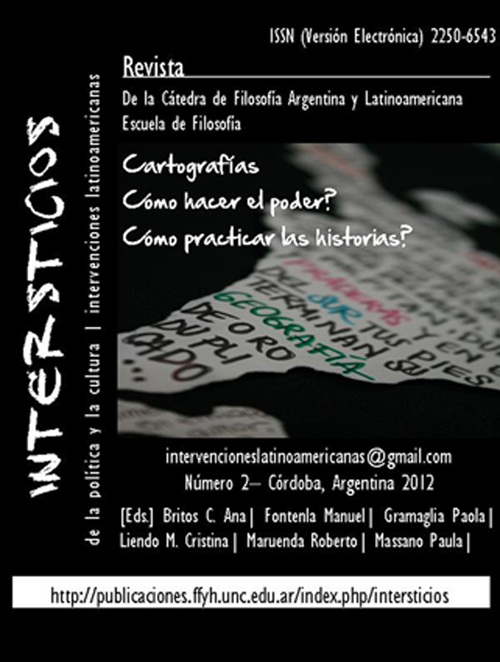LA REVOLUCIÓN INDIA DE FAUSTO REINAGA: IDEOLOGÍA Y FILOSOFÍA POLÍTICA DESCOLONIZADORA
Abstract
Resumen
Entre 1940 y 1991, Fausto Reinaga (1906-1994) publicó 26 libros, además de folletos, periódicos y artículos periodísticos. Su pensamiento se inició en los senderos marxista-leninista y nacionalista-revolucionario, atravesados ambos por una constante: “el problema indio”. Luego, Reinaga se apartó de las primeras posiciones ideológico-filosóficas para crear una nueva: el indianismo. Por último, Reinaga se desplazó a una nueva posición ideológica, que denominó amautismo. La revolución india (1970) es la obra culmen de la etapa indianista de su pensamiento. En 2012, salió a la luz la sexta edición y primera edición argentina de una obra fundamental del indianismo contemporáneo. Por ello, presento una visión panorámica, con algunas interpretaciones, de una obra clásica de la ideología-filosofía indianista.
Palabras Claves: REVOLUCIÓN INDIA, IDEOLOGÍA-FILOSOFÍA, DESCOLONIZACIÓN
Abstract
Between 1940 and 1991, Faust Reinaga (1906-1994) published 26 books, leaflets, newspapers and journalistic articles. His thought began in the paths Marxist-Leninist and Nationalist - Revolutionary, crossed both for a constant: “the Indian problem”. Reinaga separated of the first ideological - philosophical positions to create the new one: the indianismo. Finally, Reinaga moved to a new ideological position: the amautismo. The Indian revolution (1970) is the principal work of the indianismo. In 2012, was published the sixth edition and the first argentine edition of a fundamental work of the contemporary indianismo. I expose a panoramic vision, with some interpretations, of a classic work of the ideology - philosophy indianista.
Key Words: INDIAN REVOLUTION, IDEOLOGY – PHILOSOPHY, DECOLONIZATION
Downloads
Downloads
Published
Issue
Section
License
Authors who have publications with this journal agree to the following terms:
a. Authors will retain their copyright and grant the journal the right of first publication of their work, which will simultaneously be subject to the Creative Commons Attribution License that allows third parties to share the work as long as its author and first publication in this journal are indicated.
b. Authors may adopt other non-exclusive license agreements for distribution of the published version of the work (e.g., deposit it in an institutional telematic archive or publish it in a monographic volume) as long as the initial publication in this journal is indicated.
c. Authors are allowed and encouraged to disseminate their work through the Internet (e.g., in institutional telematic archives or on their web page) after the publication process, which may produce interesting exchanges and increase citations of the published work (see The effect of open access).


